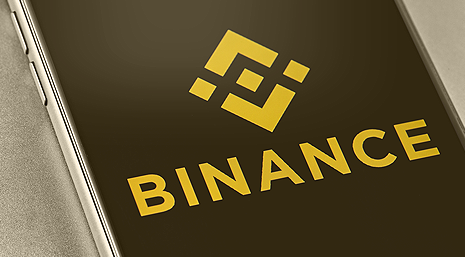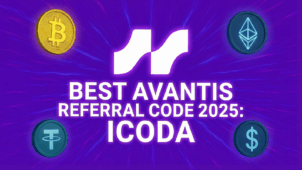share
The NFT market is growing daily; the technology attracts new users to the crypto world, from digital artists to investors. Any participant in the crypto world, both beginner and pro, knows the Binance platform as one of the most advanced blockchain technologies. Binance decided to keep up with its competitors in this matter and built an NFT marketplace on its basis. In this article, we will find out why NFT marketplaces are so popular and what they are. And we also will figure out how the Binance NFT marketplace works. This is important not only for a better understanding of the crypto world but also to stay updated with new technologies and platforms.
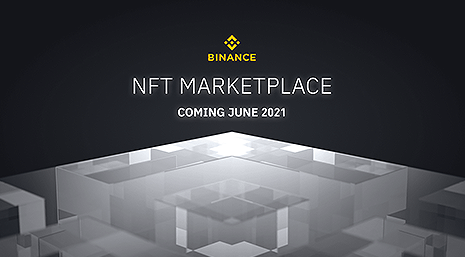
What Is Binance Smart Chain?
BSC is best described as a blockchain running parallel to the Binance chain. However, unlike Binance Chain, BSC boasts the functionality of smart contracts and compatibility with the Ethereum Virtual Machine (EVM). The project’s goal here was to leave the high bandwidth of the Binance Chain untouched while introducing smart contracts into its ecosystem.
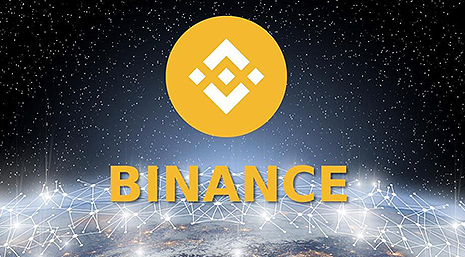
How Does It Work?
BSC was conceived as an independent but complementary to the existing Binance Chain system, the idea of which was that users could quickly transfer assets from one blockchain to another. Thus, fast trading can be carried out on the Binance Chain, while powerful decentralized applications can be built on BSC.

Binance ecosystem supports the BEP-20 token standard, which uses the same features as its Ethereum ERC-20 counterpart, while Binance Chain supports the BEP-2 token standard. BEP20 is a developer-friendly token standard that allows users to deploy interchangeable digital currencies or tokens in the BSC. Moreover, the leading digital assets in other chains can be transferred to the BSC in the form of BEP20-linked tokens. For example, you can use Binance Bridge to exchange Bitcoins (BTC) for BTCB tokens (BEP20) supported by BTC. BTCB tokens (BEP20) can then be deployed in DeFi protocols to earn returns on bitcoin. The same goes for ETH, XRP, DOGE, and many others.
What Is the Binance NFT Marketplace?
The Binance NFT marketplace is a marketplace that aims to unite crypto enthusiasts, digital art creators, collectors, musicians and sporting icons from all over the world. Based on the Binance blockchain infrastructure and community, the Binance NFT marketplace platform provides users with the highest liquidity to launch and trade NFT.
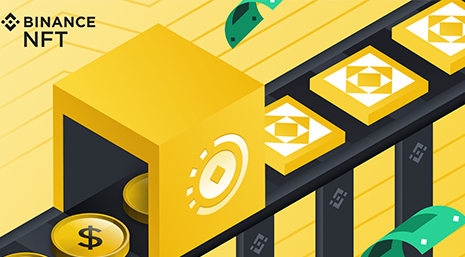
What Is an NFT?
NFTs are cryptographic tokens on the blockchain that represent “unique” assets. These unique digital assets provide owners with proof of authenticity relating to anything, whether it is music, digital art, real estate, or even precious metals. Non-fungible tokens allow anyone to immortalize an asset on the blockchain, thanks to its decentralized ledger system. NFTs allow holders to prove their authenticity and the origin of the underlying asset. Together with them, the concept of scarcity came to the world of digital assets.
At the end of June 2021, Binance launched the world’s leading NFT marketplace and trading platform, promoting digital assets’ transition to the blockchain. Interestingly, the Binance NFT marketplace launch comes at a time when the market is somewhat stagnant, and competition in the NFT space is incredibly high. However, the Binance NFT marketplace is quite the game-changer for Binance itself and the world of NFTs. By creating an NFT on the blockchain, the authors establish direct interaction with their fans without any risks associated with the platforms. Regardless of location, all persons interact with NFT contracts on the same terms, remaining free from proprietary platforms and related restrictions. NFTs that are created in the blockchain cannot be changed. It gives a sense of ownership and reliability. Open NFT standards lead to the emergence of network effects, interoperability, compatibility, and, as a result, it seems to us, a lot of interesting innovations in digital goods.
How Do I Get Started With NFT?
As the field of NFT develops, you will probably encounter a huge amount of updates and information daily. To help you understand everything, we will briefly tell you about four aspects to which you should pay attention before buying anything on the NFT platform.
NFT Type
Before you dive into the world of NFT, it’s important to understand which type of NFT might interest you the most. Fortunately, many NFT categories exist, among which digital art, games, and music predominate today. Within these categories (and indeed all categories), there may be a further division into subcategories, including NFT, which can be considered premium (for example, created by recognized artists/authors) and more basic (created by any other authors). Various trading platforms are hosting different types of NFT collections. The place where you decide to buy your NFTs will largely depend on the type of NFT collection you want to collect.

For beginners who want to get acquainted with a wide range of NFT, the recently launched first-class decentralized platform NFT Featured by Binance, as well as the Binance NFT marketplace, can be an excellent starting point. These platforms target audiences in various niches – from general categories to a specific industry, such as games or art. At these sites, everyone will find something interesting for themselves – starting with world-class NFT created by famous artists and ending with NFT by novice authors.
Liquidity and Market Volume
In the early days of the NFT, most of what was on the market could be classified as “collectables”. These types of NFTs are usually bought and then held by the buyer in the hope that the asset will eventually rise in value. However, as with physical paintings, reselling an asset on the market may be difficult, especially if the underlying asset is not currently popular.
Thanks to Binance’s prominent status in crypto, its native NFT marketplace platform seeks to bring additional liquidity to the NFT ecosystem and emphasize the power of non-fungible token NFT in the collectables and digital art spheres. Therefore, it is important to remember that buying NFT is significantly different from buying bitcoin, which is always liquid, due to the large market volumes on cryptocurrency exchanges. Depending on the type and popularity of the purchased NFT, you may face long-term low liquidity and low demand for the asset in anticipation of its value growth.
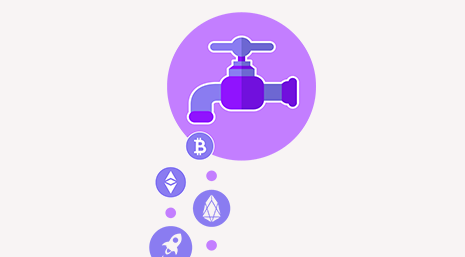
Fortunately, unlike other NFT platforms, the Binance NFT marketplace offers a unique offer for buyers and sellers who want higher liquidity guarantees of purchased NFTs. As the leading cryptocurrency exchange, Binance will create a natural bridge between the trading platform and the NFT platform.
Users will be able to use both instruments without any interference, which, in turn, will increase liquidity and facilitate trading on the NFT marketplace. As an asset trading venue for NFT authors and collectors, featured by Binance will provide all the tools to create, sell and showcase NFT creations.
Transaction fees
We find what we were looking for, go to the payment page, keep the initial price in mind, and are surprised that a huge transaction fee has now been added to the total amount. Since prices for NFT vary widely, it is extremely important to know in advance the amount of the transaction fee on the platform and the amount of the gas fee on the token blockchain. Transaction fees vary significantly, and even the term “transaction fee” may have different meanings on different platforms. However, if the transaction fee means all additional costs for sale are deducted to the platform or the author, then it turns out that the commission on NFT platforms averages from 2.5% to 15%!
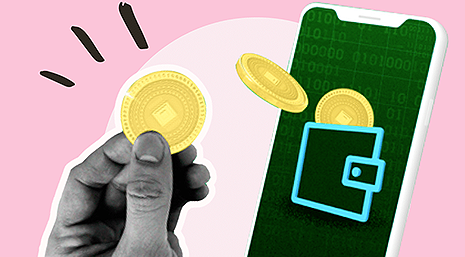
That is why it is necessary to carefully study the additional costs of a particular operation with NFT. For beginners in the field of NFT, the Binance NFT marketplace can be a good place to start. And it’s not just that it covers a wide range of NFT categories. The commission for operations on the platform is only 1%! Platform participants can be sure that when making transactions, they will not face unexpected fees when completing the transaction.
Experience
Binance NFT marketplace has a wide range of functionality and is ready to help you gain an amazing and unencumbered experience in buying and selling NFT. Many NFT marketplaces are ordinary trading platforms, just platforms for exchanging digital assets in the blockchain. Meanwhile, the experience associated with NFT can (and should) be much more extensive. NFTs open up many opportunities in both the real and digital world. They do not only bring authors closer to their audience – they cause such a stir that the digital asset industry has not known before.
Work With Binance NFT Marketplace
Binance NFT marketplace brings together artists, creators, and crypto enthusiasts on a single platform for creating and trading NFT. The Binance trading platform is a website where transactions for the purchase/sale of NFT collection of non-interchangeable tokens and other digital art items are carried out.
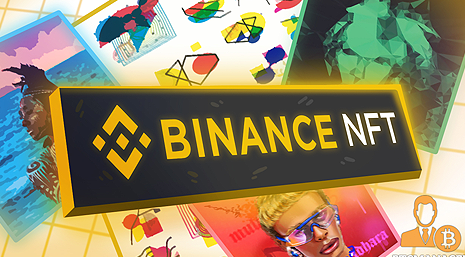
Binance Non-Fungible Tokens are created according to BEP-721 and BEP-1155 standards and are stored in the Binance Smart Chain (BSC). In terms of their functionality, they are direct analogues of ERC-721 and ERC-1155 tokens that work on the Ethereum blockchain. Still, mint NFTs and executing transactions on the Binance Smart Chain are much cheaper. The BEP-721 and BEP-1155 tokens can be stored in the Trust Wallet crypto wallet.
Unlike conventional cryptocurrencies, NFT tokens do not have one common address in the wallet. A separate code is created for each of them, which cannot be broadcast over the network without the permission of the owner of the digital asset.
Three digital product lines are supported on the Binance Market within the same ecosystem:
- issuance and sale of non-interchangeable tokens;
- NFT presentations produced by authors of works of art and other products;
- mystery box.
The latter implies selling in closed boxes. You can buy a very rare token quite cheaply if you’re lucky. Although more often in the box comes an ordinary and inexpensive NFT. An unopened mystery box can be exchanged for another, but you cannot return the money.
How to Trade NFTs on Binance
The platform has a clear interface and great functionality, so everyone can figure out how it works.

If you are new to Binance, you can get started in 4 quick and easy steps:
Step 1: Register a Binance Account
Step 2: Complete the verification
Step 3: Make a deposit or buy a cryptocurrency
Step 4: Trade NFT on Binance NFT Marketplace
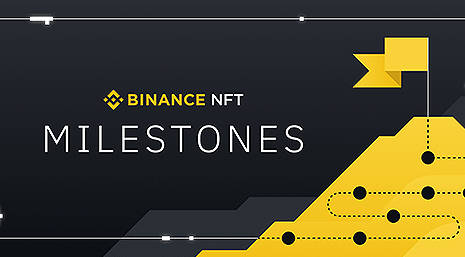
To verify the identity, it is necessary:
- fill out the questionnaire;
- upload photocopies of documents;
- pass a face check by following the prompts.
If everything is done correctly, then the status will be confirmed in a day, and you will get access to all the services of the exchange.
Buying NFT
To buy Non-Fungible Tokens, top up your account in one of the cryptocurrencies – BNB, BUSD, or ETH. The purchased tokens are credited to the Binance account. If necessary, they can be withdrawn to any wallet with support for the BEP-721 and BEP-1155 token standards.
If the desired token has a fixed price sale, the purchase is made literally in two clicks. But some authors prefer to arrange sales in the form of an auction. The seller sets the minimum bid and the duration of the auction. The one who made the highest bid at the end of the auction receives the goods.
Creating an NFT
Creating new tokens on the Binance market is not available to everyone. However, developers are planning to fix it soon. We will give instructions for the future:
- Click the “Create” button on the marketplace page;
- Upload a file – it can be an image, video, audio or PDF.
- Add additional information about the token. You can create not one but a series of NFTs at once. Then you will have the opportunity to sell several identicals in appearance but unique in the identifier of digital objects.
- There is a fee for minting. Make sure you have enough BNB in your account.
- Next, Binance will issue the transaction ID. You can view it in the BSCScan browser.
All NFTs you bought or created are displayed in the History/NFT Assets section/NFT collection.
Sell NFTs
Instructions for selling non-fungible tokens (NFT sale) on Binance:
- Go to the page of the NFT Asset website, Collections section. Select the token you want to put up for sale.
- You will be taken to a page with a description of the NFT asset and the history of its origin.
- Click the List NFT button to go to the listing settings.
- Choose from the following options – instant sale at a given price or auction. In the second option, you will need to set a minimum bid – the auction will start with it; also, select the auction completion time. The maximum possible duration is 30 days.
- Choose the cryptocurrency used as payment – BNB, BUSD, ETH.
- Specify the NFT category. This way, it will be easier for potential buyers to find the necessary tokens.
- Publish a description.
- Read the information about the commissions and click the “Submit” button.
Before listing, the Binance team checks each non-fungible token manually. The process takes up to eight hours. Notification of the results will be sent by e-mail or SMS.
In Conclusion
For another 7-8 years, the crypto environment believed that blockchain technology could be used only in the field of finance in the cryptocurrency space. Now it is obvious that this is not the case. Distributed ledger technology has a wider range of applications; NFTs prove this.
Soon, non-fungible tokens will become an integral part of the blockchain industry. NFT trading (trade NFTs) is already becoming a popular way to earn money on cryptocurrency.
